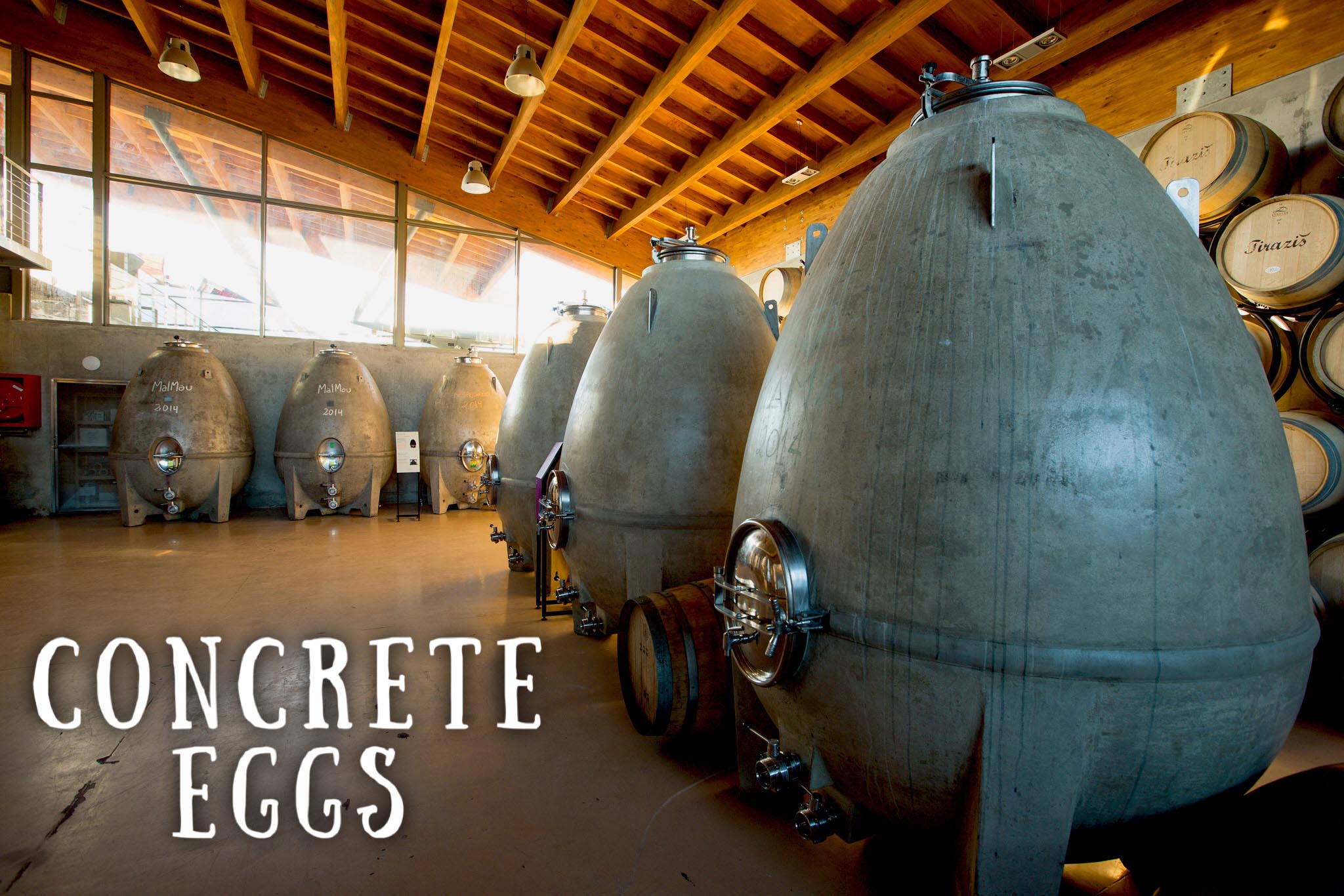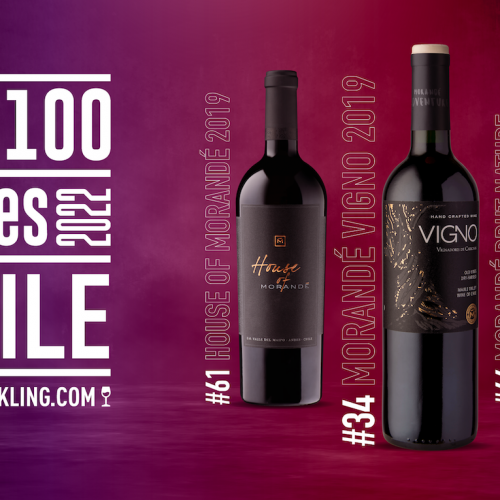
23 Oct Concrete eggs, or from the squaring to the circle
Or, to be more precise, to the oval shape. Although reinforced cement, and before that, masonry, have been used for centuries (Pliny already mentioned it in 79 A.D.), it was in England and as of 1756, that the first industrial production of cement emerged. And in 1865, it was Joseph Monier, a Parisian gardener, who invented reinforced concrete (cement with iron). It has since then been adopted and widely used in winemaking, reaching its peak in the 70’s to then become obsolete due to the arrival of stainless steel.
From being an essential part of the supporting structures in the wine cellars, the old concrete vats derived today into small and beautiful containers of various forms, among which the amazing truncated cone and oval-shaped stand out.
Guided by the anthroposophical statements of Rudolf Steiner (the Austrian-born philosopher, author of the book ‘Philosophy of Freedom’, who was also an artist, architect and creator of the Waldorf education), the well-known French wine producer Michel Chapoutier turned in 1991 his Hermitage vineyards on the Rhône to biodynamics and created a container whose form would allow him to connect with the cosmos and the forces of the earth. To do so, he set his sights on concrete and on the most perfect form of nature: the circumference, thus relating it to the history of Roman amphorae and Georgian kvevri. The person in charge of putting these ideas into practice, using the sands of the banks of the Loire River, was the builder Marc Nomblot. He transformed the straight lines of the large cement vats into small oval-shaped containers, better known as eggs.

Although the experience with these containers hasn’t yet been too extensive over time, their use is already wide-spread throughout the world thanks to their beauty and the characteristics that -we believe- their materials and shape provide. The cemented eggs are not internally coated with epoxy resin or ceramic, like the large fermenters, which allows for a small and beneficial oxygenation of the wine, without adding marked flavors, as is the case with wood. Before using them, it is important to treat the inside of the cemented eggs with a paste of tartaric acid, very grape-own, in order to protect the wine from transfers of calcium and others.
The relatively thin cement walls buffer the temperature differences with the outside without concentrating the heat, which allows to obtain smooth and continuous fermentations. Thanks to its almost spherical shape and the temperature differentials generated inside, the wine circulates laterally and vertically, keeping the lees lightly suspended, thus delivering a feeling of greater volume on the palate and an outstanding purity of aromas.
The narrowing of the form towards the top allows to keep the cap of skins and solids further submerged and in greater contact with the wine. This favors a passive maceration, softer extractions and delivers tannins of higher quality.
In other words, it is the squaring of the circle of wine containers… Or vice-versa?
Following our spirit of innovation, in Viña Morandé we have had 15 cement eggs since 2012, using them for fermentations and wines from our Adventure line, and also in special components that mark and characterize our Gran Reserva wine blends, such as Sauvignon blanc, Chardonnay and Pinot Noir.
Winemaker at Viña Morandé




